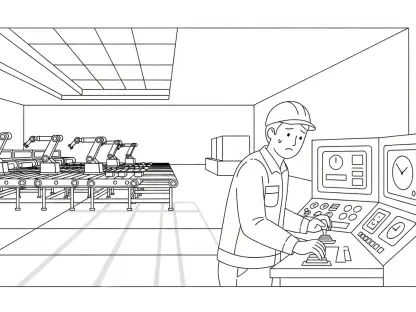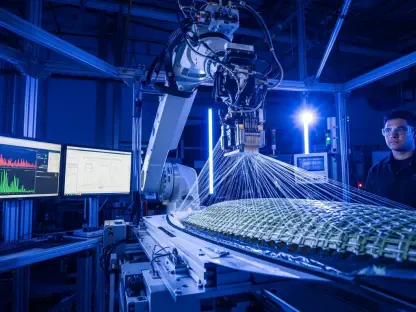In the contemporary landscape of global humanitarian efforts, the intersection between foreign aid and domestic economic advantage emerges as a topic of substantial interest. Whereas many traditional perspectives have viewed aid solely as a moral obligation, an increasing body of evidence points to a more dynamic relationship wherein such endeavors contribute significantly to local economic vitality. This discussion seeks to unravel the complexities of this symbiotic relationship, specifically focusing on the Ready-to-Use Therapeutic Food (RUTF) initiative, a critical endeavor addressing severe malnutrition in children worldwide. By dissecting the implications of RUTF production and its broader impact, it is possible to explore how humanitarian aid serves not just as a compassionate act but also as a strategic economic engine for the US, engaging diverse sectors from agriculture to manufacturing.
The Role of Ready-to-Use Therapeutic Food in Economic Support
Integrating Agriculture and Industrial Activities
Ready-to-Use Therapeutic Food has become more than just a life-saving intervention; it represents a robust intersection of humanitarian and economic interests, particularly evident in the operational model of MANA Nutrition. A nonprofit located in Georgia, MANA Nutrition sources millions of pounds of peanuts monthly from local farmers, thereby directly supporting American agriculture. This substantial procurement not only sustains the farmers but also creates a ripple effect through rural economies. The subsequent transformation of these agricultural products into nutrient-dense packets further engages and supports local manufacturing sectors, demonstrating a dual benefit system where humanitarian goals align with domestic economic interests.
Moreover, the operational capacity of MANA Nutrition reflects a strategic aspect of scalability and efficiency, producing up to 500,000 pounds of RUTF daily. This efficiency not only highlights the capability of American industries to support large-scale production but also secures employment for hundreds of workers engaged in various facets of the supply chain. Thus, the RUTF initiative serves as a tangible example of how strategic deployment of aid-oriented projects can sustain and grow local economies, creating a robust narrative where humanitarian efforts reinforce national economic prosperity.
Balancing Policy and Economic Interests
The interplay between government policy and foreign aid determines the efficacy and sustainability of initiatives like RUTF. This dynamic is particularly evident in how changes in administration and policy priorities can either bolster or threaten these programs. Under the Trump administration, foreign aid was realigned to prioritize national and economic benefits, a move that surprisingly coincided with the operational goals of RUTF. By framing foreign aid as not merely charity but a component of an economic strategy, this framework paved the way for broader acceptance and support for such initiatives.
However, the volatility of political landscapes underlines a critical challenge: ensuring continuity and support for programs with demonstrable benefits on multiple fronts. MANA Nutrition’s development, underpinned by private donations rather than public funding, further exemplifies the critical importance of strategic foresight and effective management. It highlights a model where anticipatory policy designs can safeguard programs against potential funding rollbacks or shifts in political priorities, ensuring sustainability both domestically and in global humanitarian contexts.
The Economic and Humanitarian Nexus of RUTF
Private Support and Public Benefit
RUTF’s development and distribution underline a paradigm where humanitarian aid initiatives catalyze private sector engagement, leading to broad public benefits. The nonprofit framework of MANA Nutrition, driven by private donations, exemplifies an operational model distinct from traditional government-supported aid mechanisms. The U.S. Agency for International Development (USAID) funding is directed exclusively toward purchasing RUTF for distribution in crisis regions, allowing the nonprofit to retain operational independence. This independence not only ensures an optimized allocation of resources but also propels a meticulous application of business efficiencies within the nonprofit domain.
By applying principles of accountability and strategic planning commonly associated with profit-driven enterprises, MANA establishes a benchmark for efficacy. This strategic alignment further positions RUTF as a prototype for other humanitarian initiatives, emphasizing a collaborative model where private efforts amplify public outcomes. As such, effectiveness in tackling global crises becomes a testament to the potency of integrated economic and humanitarian policy actions.
Synergistic Growth: From Charity to Strategic Investment
The transformation in perception from viewing humanitarian aid as pure charity to recognizing it as a strategic investment marks an important shift. In the case of RUTF, the direct benefits to local farmers, manufacturers, and workers create a significant economic feedback loop. Production and exportation of RUTF establish a demand for domestically produced raw materials and manufactured goods, linking global aid efforts with local economic growth. Such outcomes are illustrative of how well-structured aid initiatives have the potential to catalyze regional development, transcending their initial philanthropic intent.
Furthermore, the narrative underscores the necessity to maintain support for programs like RUTF that embody the principle of mutual benefit. By intertwining humanitarian objectives with economic interests, such initiatives challenge traditional dichotomies, creating a space where localized economic growth thrives alongside global responsibility. The continuity of these efforts relies heavily on policy foresight that integrates both human compassion and economic strategy, encouraging continual investment and adaptive strategies in an ever-evolving global landscape.
A Broader Perspective on Aid and Economic Prosperity
Aligning National and Global Interests
The broader implications of successful aid programs like RUTF necessitate an understanding that transcends isolated benefits. By aligning national interests with global humanitarian objectives, these programs manifest as practical investments into a nation’s socio-economic fabric. The ongoing support for RUTF underscores the kind of interconnection necessary to sustain economic infrastructure while fulfilling moral and ethical imperatives. This alignment facilitates not only immediate humanitarian relief but also long-term prosperity through job creation and supply chain engagement.
Strategically, maintaining open dialogues between policymakers, industry leaders, and aid organizations remains paramount. Ensuring that foreign aid programs like RUTF continue to receive support requires a critical balance of innovative policy-making, transparent governance, and proactive stakeholder engagement. The narrative around RUTF’s impact serves as a pertinent example of how collaborative efforts in the humanitarian sector can drive forward a vision where domestic and global interests are mutually reinforcing.
The Potential of Holistic Engagement
This discussion illuminates the broader potential for holistic engagement between humanitarian initiatives and economic growth. As illustrated through RUTF, embracing such programs offers a template for synthesizing compassionate policy approaches with pragmatic economic development. By engaging with and supporting sustainable aid projects, societies worldwide stand to benefit not only from strengthened humanitarian outcomes but also from invigorated economic activities.
Significant opportunities exist in leveraging this synergy to enhance both global aid effectiveness and domestic economic vitality. Encouraging innovation, fostering partnerships, and prioritizing accountability emerge as key strategies to successfully navigate the complexities of cross-sector cooperation. By positioning humanitarian aid as a strategic economic catalyst, the resulting synergy could inspire further developments, encouraging nations to re-envision the role of international assistance in shaping a more interconnected, prosperous future.
Reflecting on Humanitarian Aid’s Economic Contribution
Ready-to-Use Therapeutic Food (RUTF) has evolved beyond its lifesaving role, becoming a symbol of the intersection between humanitarian and economic goals, exemplified by MANA Nutrition’s operational model. This nonprofit, situated in Georgia, sources millions of pounds of peanuts each month from local farmers, nurturing American agriculture. Such significant procurement not only sustains farmers but also stimulates rural economies. Transforming these raw products into nutrient-rich packets engages local manufacturing sectors, merging humanitarian aims with economic benefits.
MANA Nutrition’s operational capacity underscores strategic scalability by producing up to 500,000 pounds of RUTF daily. This efficiency showcases American industry’s ability to support large-scale production while ensuring employment for countless workers within the supply chain. The RUTF initiative illustrates the power of deploying aid-driven projects to bolster local economies, crafting a narrative where humanitarian endeavors enhance national economic welfare. This integration underscores how targeted projects can fuel growth and prosperity simultaneously.









